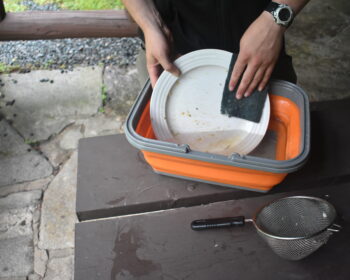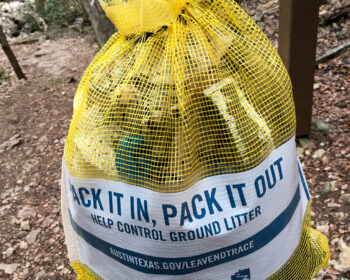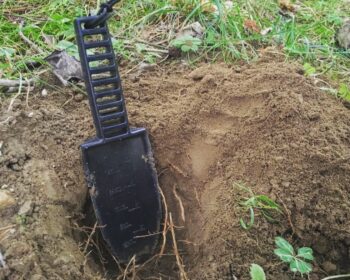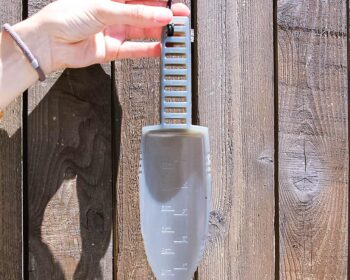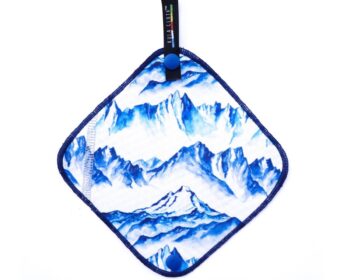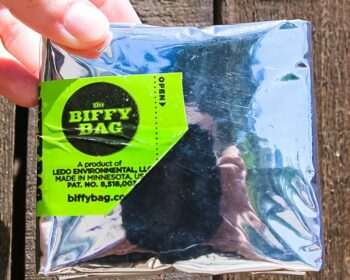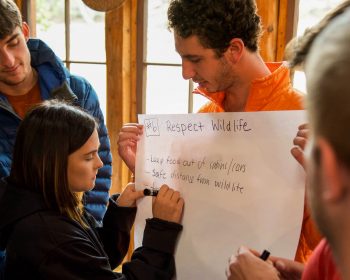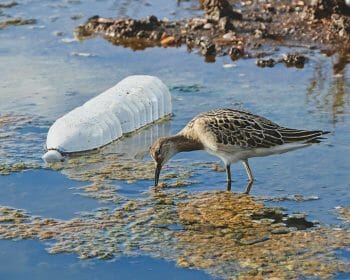Principle 3: Dispose of Waste Properly
The waste humans create while enjoying outdoor spaces can have severe impacts if not disposed of properly. It is crucial to anticipate the types of waste you will need to dispose of and know the proper techniques for disposing of each type of waste in the area you are visiting. Leave No Trace encourages outdoor enthusiasts to consider the impacts they leave behind, which will undoubtedly affect other people, water, and wildlife.
The Basics:
- Pack it in, pack it out. Inspect your campsite and rest areas for trash or spilled food. Pack out all trash, leftover food, and litter. Burning trash is never recommended.
- Deposit solid human waste in catholes dug 6-8 inches deep at least 200 feet from water, camp, and trails. Cover and disguise the cathole when finished.
- Bury toilet paper deep in a cathole or pack the toilet paper out along with hygiene products.
- To wash yourself or your dishes, carry water 200 feet away from streams or lakes and use small amounts of biodegradable soap. Scatter strained dishwater.
Practice the Skills of this Principle
Human Waste
Currently, over one hundred protozoans, bacteria, and viruses have been identified in human wastes, including Giardia lamblia, Cryptosporidium parvum, various coliform bacteria, and viruses such as Hepatitis A. Proper disposal of human waste is important to avoid pollution of water sources, avoid the negative implications of someone else finding it, minimize the possibility of spreading disease and maximize the rate of decomposition.
In most locations, correctly burying human feces is the most effective method to meet these criteria. Solid human waste must be packed out from places like narrow river canyons. Land management agencies can advise you of specific rules for the area you plan to visit. Twenty-five percent of National Park Service managers reported that inadequate disposal of human waste was a common problem in many of their backcountry areas.
Several EPA-approved, commercially produced pack-out systems are available that are easy to use and sanitary for backpacking/hiking use. Other systems (including reusable, washable toilet systems) are bulkier and may be better suited for paddling/rafting trips. As more and more people enjoy parks and protected areas every year, packing out human waste is likely to become a common practice to ensure the long-term sustainability of our shared lands. In some environments, particularly in fragile alpine or desert settings, land managers may require that all solid human waste be packed out.

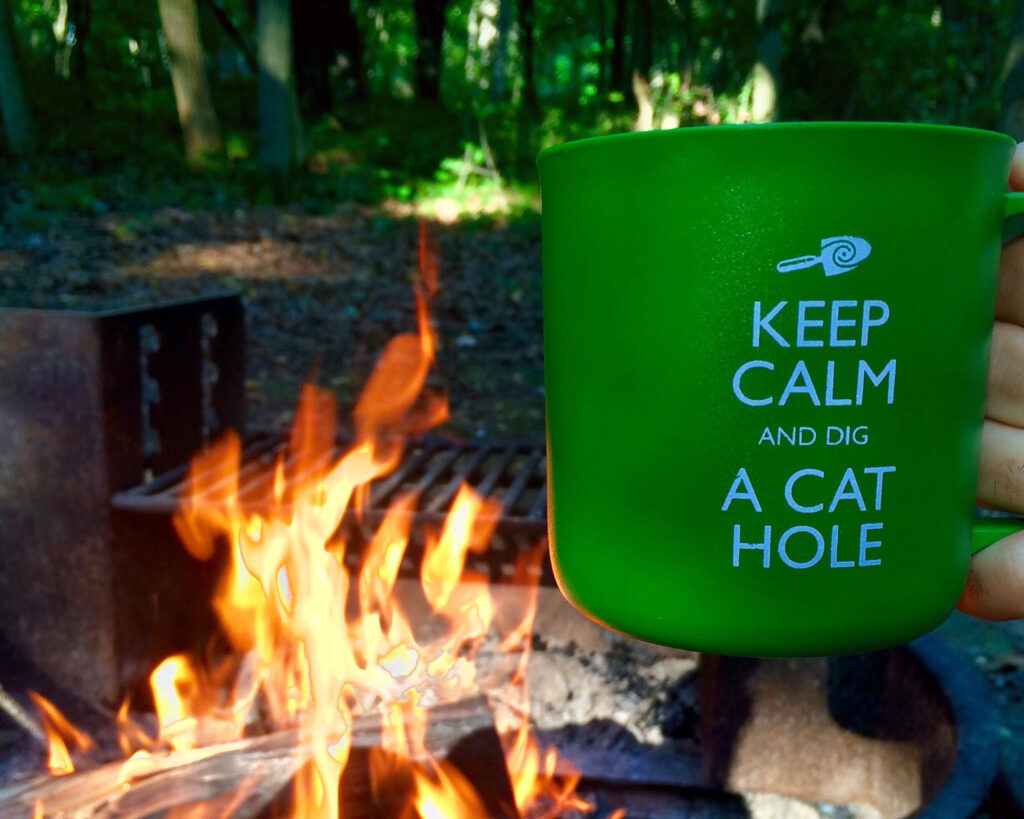
Cat Holes
Cat holes are the most widely accepted method of waste disposal:
- Locate cat holes at least 200 feet (about 70 to 80 adult paces) from water, trails, and camp.
- Select an inconspicuous site where other people will be unlikely to walk or camp.
- Dig a hole 6-8 inches deep and 4-6 inches in diameter with a small garden trowel.
- The cat hole should be covered and disguised with natural materials when finished.
Examples of cat hole sites include thick undergrowth, near downed timber, or on gentle hillsides.
- If camping with a group or in the same place for more than one night, disperse the cat holes over a wide area; don’t go to the same place twice.
- Try to find a site with deep organic soil. This organic matter contains organisms that will help decompose the feces. (Organic soil is usually dark and rich in color.)
- If possible, locate your cat hole where it will receive maximum sunlight. The heat from the sun will aid decomposition.
- Choose an elevated site where water would not usually go during runoff or rain storms. The idea here is to keep the feces out of water. Over time, the decomposing feces will percolate into the soil before reaching water sources.
- Avoid areas where water visibly flows, such as sandy washes, even if they are dry at the moment.
Latrines
Though cat holes are recommended for most situations, there are times when latrines may be more applicable, such as when camping with young children or if staying in one camp for longer than a few nights. Use similar criteria for selecting a latrine location as those used to locate a cat hole. Since this higher concentration of feces will decompose very slowly, location is especially important. A good way to speed decomposition and diminish odors is to toss in a handful of soil after each use. Ask local land managers about latrine-building techniques.
Toilet Paper
Toilet paper must be disposed of properly. Left on the surface, it can impact other visitors, attract wildlife and cause contamination. It should be thoroughly buried in a cat hole or packed as trash. Packing out toilet paper in arid landscapes such as desert environments is best.
Avoid using scented brands whenever possible. Natural toilet paper, such as vegetation or snow, may be used but should be buried in the cat hole to avoid contamination. Burning toilet paper is not recommended, as this practice can result in wildfires. Wipes, even those marketed as biodegradable, should always be packed out as trash.
Menstrual Waste
Proper disposal of tampons and pads requires packing them out. They should not be buried because they do not decompose readily, and animals may dig them up. Tampons without applicators may be utilized to minimize the amount of trash needing to be packed out.
To pack these items, as well as toilet paper, diapers, etc., out, a sealable plastic bag covered in duct tape can be a cheap and easy solution. This provides privacy and keeps this trash separate.
If using a menstrual cup, waste should be disposed of in a cat hole, similar to solid human waste. This cat hole should be 200 feet from water sources, trails, and campsites. Dig a 6-8 inch deep hole, dispose of waste, refill, and disguise. This waste should be packed out if a cathole cannot be dug.
Urine
Urine has little direct effect on vegetation or soil. In some instances, urine may draw wildlife that is attracted to the salts. They can defoliate plants and dig up soil. Urinating on rocks, pine needles, and gravel is less likely to attract wildlife. Diluting urine with water from a water bottle can help minimize adverse effects.
To minimize social impacts and contamination, it is also best to urinate 200 feet from trails, campsites, high-use areas, and water sources with a water flow of less than 500 cubic feet per second.

Other Forms of Waste
“Pack it in, Pack it out” is a familiar mantra. Trash items can take significant time to break down, are incredibly harmful to wildlife, and are unsightly to other visitors. Any user of natural spaces is responsible for cleaning up before they leave. Inspect your area for trash or spilled food. Pack out all trash and garbage.
It is critical to wildlife that we pack out kitchen waste, such as bacon grease and leftovers. Plan meals to avoid generating messy, smelly garbage. Don’t count on a fire to dispose of it. Half-burned or buried garbage will still attract animals and make a site unattractive to other visitors.
Overlooked trash is litter, which is not only ugly but can also be deadly. Plastic bags, cigarette butts, fishing line, and other trash can harm our environment when not properly disposed of.
Carry bags to haul your trash (and maybe someone else’s). Before moving on from an area, search for micro-trash, such as bits of food and trash, including organic litter like orange peels or pistachio shells. Invite the kids in your group to make a game out of scavenging for human signs.
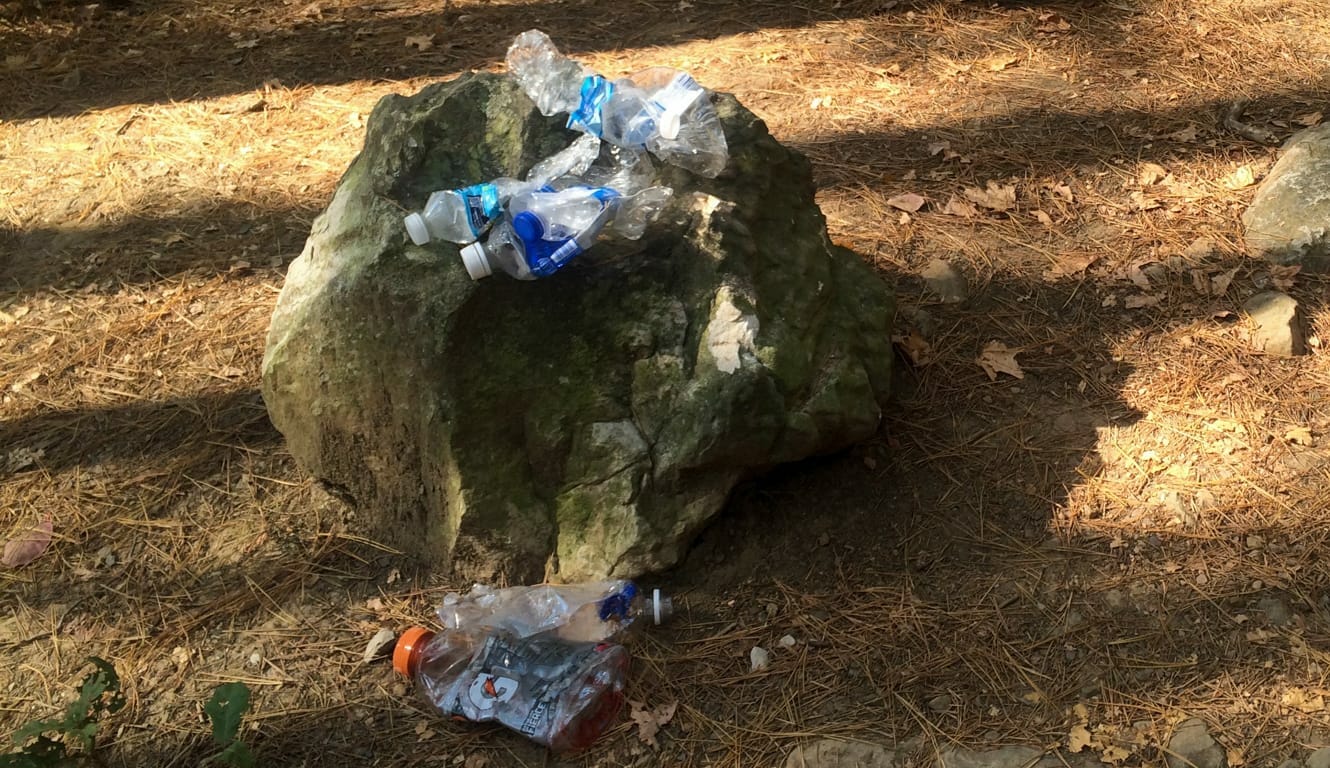
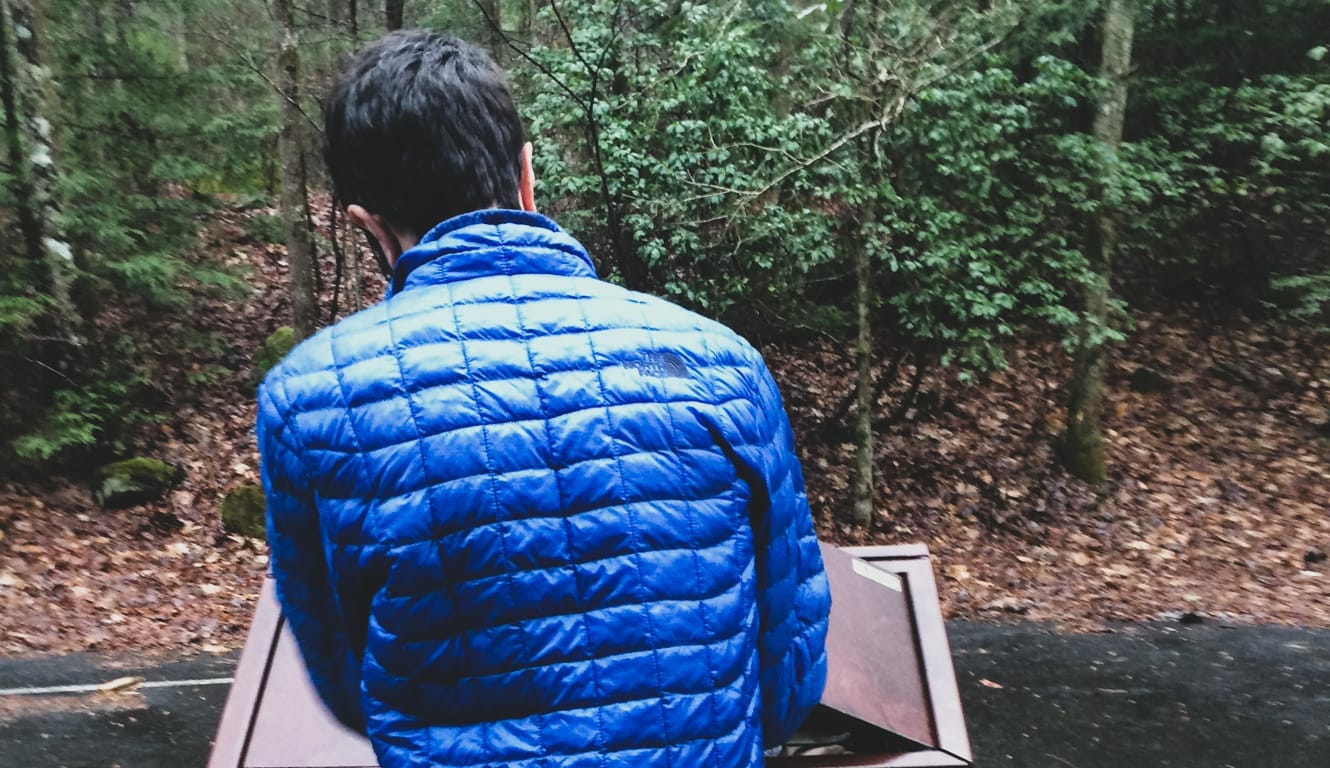
Wastewater
When washing yourself or your dishes, it is essential to reduce water contamination. Do not wash directly in a lake or stream; instead, carry water 200 feet away from water sources and scatter strained wastewater. Hand sanitizers that don’t require rinsing allow you to wash your hands without worrying about wastewater disposal.
For dishwashing, use a clean pot or another container to collect water, and take it to a wash site at least 200 feet away from water sources. This lessens the trampling of lakeshores, riverbanks, and springs and helps keep soap and other pollutants out of the water. Use hot water, elbow grease, and soap if necessary. Strain dirty dishwater with a fine mesh strainer before scattering it broadly. Do this well away from camp, especially if bears are a concern. Pack out the contents of the strainer along with any uneaten leftovers.
Food scraps, mud, and odors can accumulate in developed campgrounds where wastewater is discarded. Contact your campground host for the best disposal practices and other ways to Leave No Trace at your campsite.
Soaps and Lotions
Soap, even when it’s biodegradable, can affect the water quality of lakes and streams, so minimize its use. Always wash away from shorelines (200 feet), and rinse with water in a pot or jug. This allows the soil to act as a filter. Where fresh water is scarce, think twice before swimming in creeks or potholes. Lotion, sunscreen, insect repellent, and body oils can contaminate these vital water sources.
Shop this Principle
Do you believe that education is the most effective line of defense for protecting the outdoors? Leave No Trace teaches millions of people the critical skills needed to care for the environment every year.
Let’s protect and enjoy our natural world together
Get the latest in Leave No Trace eNews in your inbox so you can stay informed and involved.

